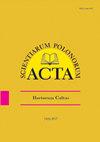未接触化学保护方法的苋栽培条件下过氧化氢酶土壤活性的评估
IF 0.6
4区 农林科学
Q4 HORTICULTURE
引用次数: 2
摘要
本研究的目的是确定栖息地、品种和发育生长阶段对两个苋品种——Rawa(Amaranthus cruentus L.)和Aztek(Amaranthaus hypochodiacus×Amaranthuth hybridus L.)土壤中过氧化氢酶活性的影响。在为期3年的田间试验(2013-2015)中,在波兰东南部(50°71'N,23°04'E)优质小麦复合体的土壤上,苋属植物以宽行距生长。田间试验包括4个可变因素:天气条件;选定的苋生长阶段(5叶、全花和种子成熟阶段);NPK剂量组合(I:40 kg N∙ha-1,30 kg P∙ha-1,30 kg K∙ha–1;II:60 kg N∙ha-1,40 kg P∙ha–1,40 kg K∙ha-1;III:80 kg N∙ha-1,50 kg P∙哈-1,50公斤K∙ha-1;IV:120公斤N∙ha-1,70公斤P∙ha-1.70公斤K∙ha-1')和两个品种(“Rawa”和“Aztek”)。由于波兰没有这种植物的病原体和害虫,因此在种植过程中没有使用杀虫剂。植物保护仅限于两次减少杂草侵扰。研究表明,天气条件是影响土壤过氧化氢酶活性的主要因素,其次是施肥、品种和生长阶段。所有分析的因素都对土壤有机质含量有显著影响,而只有施用NPK对土壤吸附能力有影响。此外,研究发现,与Rawa相比,Aztek对土壤中过氧化氢酶活性和腐殖质积累有积极影响。苋对土壤环境和酶活性的有益作用归因于缺乏引入的杀虫剂。本文章由计算机程序翻译,如有差异,请以英文原文为准。
Assessment of catalase soil activity under amaranth cultivation not exposed to chemical protection methods
The aim of the study was to determine the influence of habitat, cultivar and developmental growth stage on catalase activity in soil under two amaranth cultivars – Rawa (Amaranthus cruentus L.) and Aztek (Amaranthus hypochondriacus × Amaranthus hybridus L.). In a 3-year field experiment (2013–2015), amaranth’s plants were grown in a wide-row spacing on the soil of the good wheat complex in south-eastern Poland (50°71'N, 23°04'E). The field experiment included 4 variable factors: weather conditions; selected amaranth growth stages (5-leaf, full flowering and seed maturity stages); NPK dose combinations (I: 40 kg N ∙ ha–1, 30 kg P ∙ ha–1, 30 kg K ∙ ha–1; II: 60 kg N ∙ ha–1, 40 kg P ∙ ha–1, 40 kg K ∙ ha–1; III: 80 kg N ∙ ha–1, 50 kg P ∙ ha–1, 50 kg K ∙ ha–1; IV: 120 kg N ∙ ha–1, 70 kg P ∙ ha–1, 70 kg K ∙ ha–1) and two cultivars (‘Rawa’ and ‘Aztek’). No pesticides are applied in the cultivation due to the absence of pathogens and pests of this plant in Poland. Plant protection was limited to reducing weed infestation twice. The conducted research showed that weather conditions were the main factor affecting catalase activity in the soil under amaranth cultivation, followed by other factors, such as fertilization, cultivar and growth stage. All the analyzed factors proved to exert a significant impact on organic matter content in the soil, while only the applied NPK fertilization had effect on sorption capacity. Moreover, it was found that the cv. Aztek positively influenced the activity of catalase and humus accumulation in the soil in comparison to the cv. Rawa. The beneficial effect of amaranth on the soil environment and its enzymatic activity was ascribed to the lack of introduced pesticides.
求助全文
通过发布文献求助,成功后即可免费获取论文全文。
去求助
来源期刊
CiteScore
1.30
自引率
14.30%
发文量
61
审稿时长
4-8 weeks
期刊介绍:
In Acta Scientiarum Polonorum Hortorum Cultus we publish original research papers and review articles containing new and significant information on broad aspects of horticulture and related disciplines. The papers are published in English only, in six issues yearly.

 求助内容:
求助内容: 应助结果提醒方式:
应助结果提醒方式:


